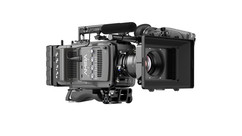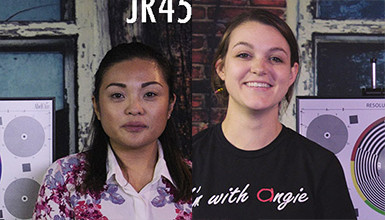Buddy is best known for his work on theatrical documentaries and television specials including Salinger, The Central Park Five, Masterclass, The Civil War, The National Parks, The War, Jazz, Ethel, and New York. With this kind of experience, it seemed appropriate that Buddy should be one of the first DPs to put the camera through its paces. At this year's Cine Gear Expo, and at our special AMIRA event back in May, Buddy elaborated on his experiences shooting with the new camera.

It was truly a whirlwind shoot - Buddy was notified on a Saturday that he'd be able to test the camera on Monday. He was introduced to the AMIRA in our NY office that Monday morning by Arri's Guenter Noesner, and by noon was off shooting. According to Buddy, "We spent 45 minutes, with Guenter figuring out the layout of the camera, and then my two assistants (Jared Ames & M'wasi T. Berkley), myself, and Guenter headed off with the camera, tripod, and a couple of lenses." For the curious, Buddy shot with an Angenieux Optimo 45-120 and an Arri/Zeiss 14mm Ultra Prime.
"I wanted to see what the camera could do and how quickly I could move between different styles of working, so I specifically wanted to do a lot of handheld work. I also wanted to try out the slow-motion features," explained Buddy. "I certainly wanted to see how well it focused, because that's really one of the biggest problems in documentary work - out of focus footage." For Buddy, the camera's single-shooter-friendly design was definitely a plus. He appreciated the convenience of having his most-used features, like white balance, easily accessible without having to dig through menus.

Buddy stated that the digital viewfinder was "as good as any digital viewfinder" he'd ever used, and was able to do the majority of the focus pulling himself, without an assistant. The AMIRA's design helped Buddy to move freely and follow the action - even switching between 24fps and 200fps was seamless. "What I really do appreciate about the camera is how thoughtful all the design elements are."
When dealing with exposure, Buddy ended up shooting the way he shoots on film, in that once he set his exposure, he didn't have to worry about continuously correcting it. One of the examples that he pointed out to the audience at Cine Gear was during the scenes in the skatepark. One one side of the park, the light was filtering through some trees, with the effect of backlighting Adam and the children, while on the opposite side, in direct sunlight, were a number of bright yellow buildings. "With any ENG camera I had been using, I probably would have been racking a stop and a half or so as I came around to hold that." Even without stopping down however, the camera was able to hold on to the details in the highlights. "Pretty quickly I got used to the idea that it was pretty hard to overexpose...the camera handles highlights beautifully."

Buddy also found that the AMIRA performed well in low-light situations, for instance, in the shot of Adam playing guitar on the roof, the only non-ambient light in that scene was provided by Buddy's assistant turning on his iPhone screen. And as far as the "digital look" or the overly sharp image that can come from a large sensor camera, Buddy admitted that he is usually forced to use diffusion to minimize it - but not on the AMIRA. When shooting, he only had to use a simple polarizer.
Explaining his hesitance to work with large-sensor cameras, Buddy said that he "was never satisfied with a whole range of things, with the imagery, with the mechanics of the various camera systems that came out." This is why much of his work up until now has been with film and 2/3" cameras. But keeping that in mind, how did Buddy summarize his experience shooting with the AMIRA? "It just works. I guess that's not a very exciting thing to say, but it just works."
















